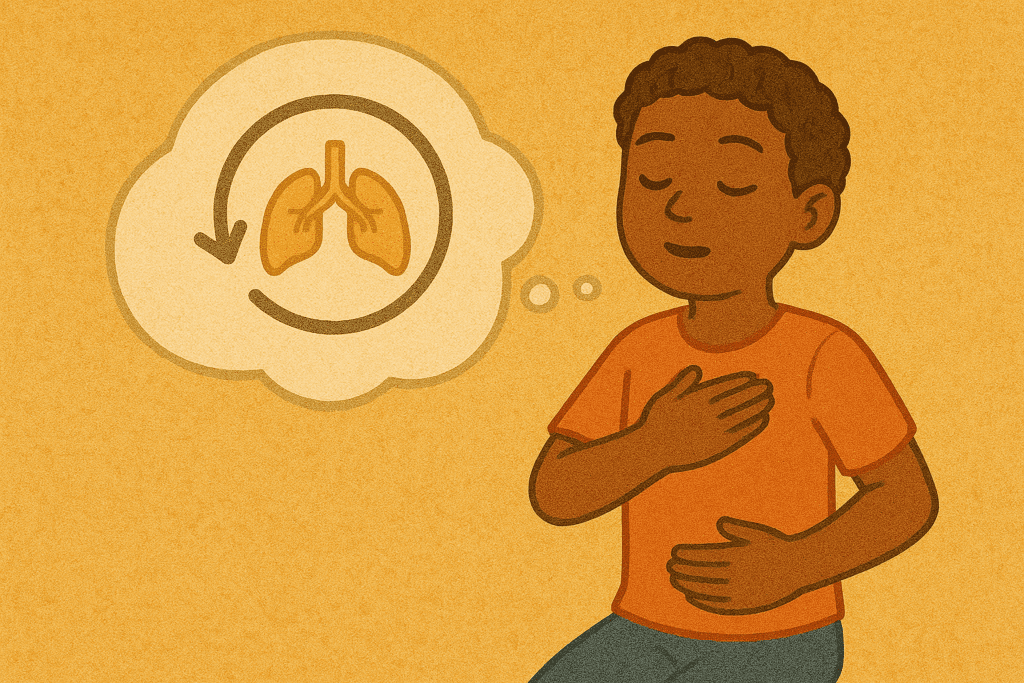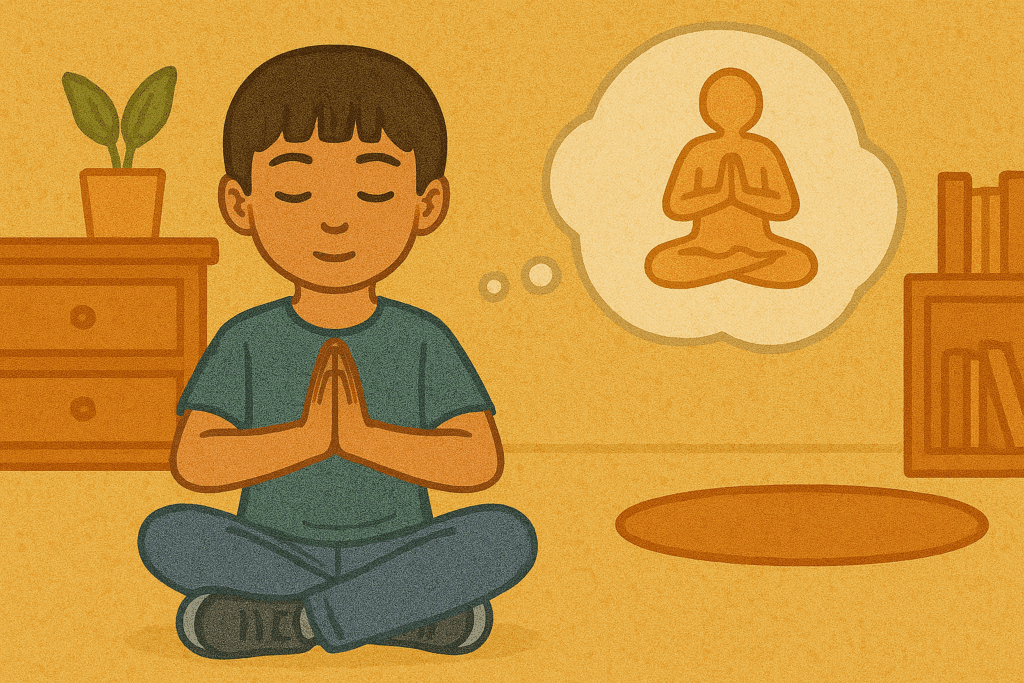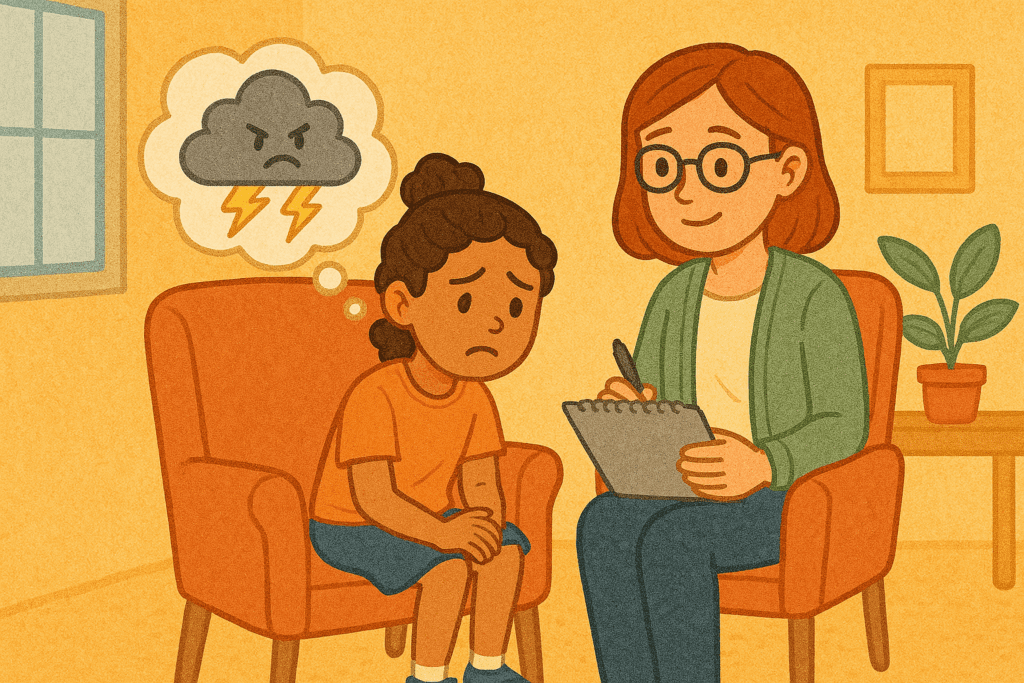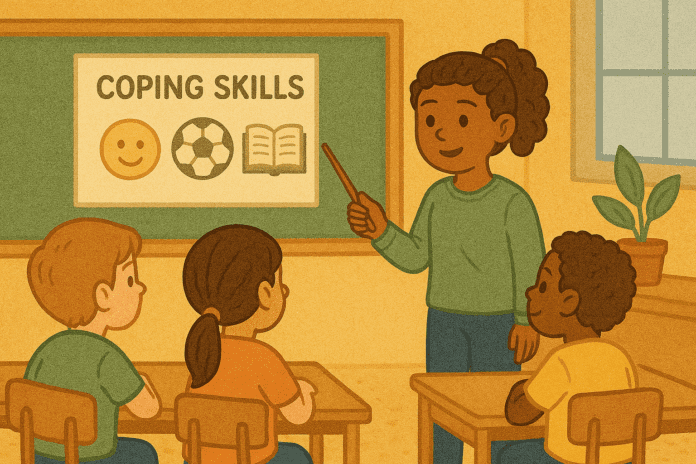In today’s fast-paced and increasingly complex world, children are facing emotional challenges at an earlier age than ever before. Anxiety, depression, social difficulties, and behavioral problems are now common concerns among school-aged children. While many factors contribute to these issues, one of the most evidence-based and effective approaches for helping children build resilience and emotional strength is Cognitive Behavioral Therapy (CBT). This article explores how cognitive behavioral therapy for kids supports mental and emotional well-being, highlights a comprehensive CBT techniques list for school children, and explains why CBT for kids is a powerful tool for fostering long-term psychological growth.
You may also like: How Does CBT Work to Improve Relationships and Communication? Science-Backed Techniques for Getting Along with Others
Understanding the Foundations of Cognitive Behavioral Therapy for Kids
At its core, cognitive behavioral therapy is a structured, goal-oriented form of psychotherapy that focuses on identifying and changing negative thought patterns and behaviors. Originally developed for adults, CBT has been carefully adapted for children to accommodate developmental differences in language, cognition, and emotional regulation. When applied to younger populations, CBT uses age-appropriate methods such as storytelling, drawing, role-playing, and games to teach children how their thoughts, feelings, and behaviors are interconnected.
CBT for kids operates on the fundamental principle that thoughts influence feelings, which in turn influence behaviors. For instance, a child who believes, “I’m not good at making friends,” may feel anxious or withdrawn at school and avoid social situations. Through CBT, that child learns to identify such unhelpful thoughts, challenge them, and replace them with more balanced perspectives. Over time, these mental shifts translate into more positive emotional states and healthier behavior patterns.
The value of cognitive behavioral therapy for kids lies not only in symptom relief but also in skill-building. Children who undergo CBT often learn how to manage stress, cope with disappointments, set achievable goals, and solve interpersonal conflicts—skills that are essential for both academic success and emotional well-being.
The Role of CBT in Promoting Emotional Strength in Children
Emotional strength, or resilience, is the ability to navigate adversity, recover from setbacks, and continue functioning effectively in the face of stress. It is not a fixed trait but a set of learned behaviors and attitudes that can be cultivated over time. CBT techniques for children are uniquely designed to help build this kind of emotional fortitude by teaching them how to reframe their thoughts, regulate their emotions, and choose constructive actions.
One of the reasons CBT is especially beneficial for school-aged children is that it encourages self-reflection in a structured yet supportive way. Children are taught to become aware of their internal dialogue and recognize when it becomes distorted or overly negative. Through consistent practice, they develop a stronger sense of self-efficacy—the belief in their ability to influence outcomes in their lives.
For example, a child who frequently experiences test anxiety might learn CBT strategies such as breathing exercises, cognitive restructuring, and visualization. These tools not only help reduce immediate distress but also instill a sense of control that extends beyond the classroom. This feeling of empowerment is central to emotional strength, as it encourages children to confront rather than avoid challenges.
CBT also addresses common developmental issues such as emotional regulation, impulse control, and problem-solving, all of which are key components of resilience. By helping children understand the link between their thoughts and behaviors, CBT lays the groundwork for long-term emotional intelligence and adaptive functioning.
CBT Techniques List for School Children: Evidence-Based Strategies That Work
When introducing CBT to school-aged children, it is essential to use developmentally appropriate techniques that align with their cognitive and emotional maturity. The following CBT techniques list for school children represents a selection of widely used, research-supported strategies that therapists and educators implement to foster emotional well-being.
Cognitive restructuring is one of the foundational techniques in CBT. It involves helping children identify automatic negative thoughts and evaluate their accuracy. Through guided questioning and discussion, children learn to challenge irrational beliefs and generate more balanced alternatives. For instance, a child who thinks, “Everyone hates me,” might be guided to consider evidence that contradicts this belief and to explore more realistic interpretations.
Another widely used technique is thought journaling. Children are encouraged to keep a daily or weekly log of their thoughts, feelings, and behaviors in various situations. This practice not only promotes self-awareness but also helps children recognize patterns in their thinking that may contribute to emotional distress. With guidance, they can begin to see how small changes in their thought processes lead to significant shifts in mood and behavior.
Behavioral activation is a powerful tool, particularly for children experiencing symptoms of depression or low motivation. This technique involves scheduling enjoyable or meaningful activities that help elevate mood and increase engagement. When children begin to experience the positive effects of these activities, they are more likely to sustain them, creating a reinforcing cycle of well-being.
Relaxation training is another core component of CBT for kids. Techniques such as deep breathing, progressive muscle relaxation, and guided imagery are taught to help children manage physiological symptoms of anxiety and stress. These skills are especially beneficial in school settings, where performance-related stress can be a major concern.
Problem-solving training is crucial for helping children navigate social challenges and academic obstacles. Through structured exercises, children learn how to define a problem, brainstorm possible solutions, weigh pros and cons, and implement a chosen strategy. This method not only improves decision-making but also boosts confidence and reduces feelings of helplessness.
Integrating CBT for Kids into School and Home Environments
For CBT to be most effective, its principles and practices must be integrated into the child’s daily environment. Schools play a critical role in this process by incorporating CBT-based interventions into classroom routines, counseling programs, and social-emotional learning curricula. Teachers and school counselors who are trained in basic CBT techniques can reinforce therapeutic goals and provide real-time support when challenges arise.
Parents also have an essential role to play in supporting CBT for kids. When parents are educated about cognitive behavioral strategies, they can model adaptive thinking and problem-solving behaviors at home. Consistency across environments helps children internalize these skills and apply them in various contexts, from family interactions to peer relationships.
For instance, if a child learns cognitive restructuring in therapy, parents can reinforce this by helping them reframe negative thoughts that arise during homework or social events. Simple prompts such as “What’s another way to look at this?” or “Is there evidence for that thought?” can reinforce CBT principles in a natural and supportive way.
Collaboration between therapists, educators, and families ensures that the child receives consistent messaging and support, increasing the likelihood of successful outcomes. Regular communication and progress monitoring help identify areas of improvement as well as obstacles that need to be addressed. This team-based approach is especially important for children with more complex emotional or behavioral needs.

Unique Considerations When Applying CBT Techniques for School Children
While CBT is highly effective for many children, it is important to recognize that not all techniques are appropriate for every developmental stage. Younger children, for example, may struggle with abstract concepts such as cognitive distortions or hypothetical reasoning. In such cases, therapists may use play-based or visual strategies to convey CBT principles in a way that resonates with the child’s developmental level.
Therapists must also consider cultural, linguistic, and familial factors when implementing CBT. A one-size-fits-all approach may not be effective, especially in diverse classroom settings or multicultural communities. Tailoring CBT techniques to the child’s background and individual preferences enhances engagement and ensures greater relevance.
Furthermore, children with learning disabilities or neurodevelopmental conditions such as ADHD or autism spectrum disorder may require additional supports or modifications. In these cases, CBT techniques must be carefully adapted to accommodate attention spans, communication styles, and sensory sensitivities. For example, visual aids, structured routines, and simplified language can make CBT more accessible for children with cognitive or behavioral challenges.
Another important consideration is the duration and frequency of CBT sessions. While some children benefit from weekly sessions over a period of months, others may require more intensive or extended support. Ongoing assessment and flexibility in treatment planning are key to meeting each child’s unique needs.
CBT as a Preventative Tool in Childhood Mental Health
In addition to treating existing emotional and behavioral problems, cognitive behavioral therapy for kids also serves as a preventative measure. By teaching children how to manage their thoughts and emotions before serious issues develop, CBT can reduce the likelihood of more severe psychological conditions later in life. Early intervention is critical, as many mental health disorders have their onset in childhood or adolescence.
Preventative CBT programs implemented in schools have shown promising results in decreasing anxiety, improving social skills, and enhancing academic performance. These programs often involve group-based sessions that focus on topics such as emotional literacy, stress management, peer relationships, and goal setting. By equipping children with these skills early on, educators and mental health professionals help lay a foundation for lifelong mental well-being.
Preventative CBT also empowers children to advocate for their mental health. When children learn to recognize early signs of stress, anxiety, or low mood, they are more likely to seek support or employ coping strategies before problems escalate. This self-awareness fosters a proactive rather than reactive approach to emotional health, which is essential in today’s high-pressure environments.
Over time, the benefits of CBT extend beyond the individual child to their peers, family, and community. Children who practice CBT techniques often demonstrate greater empathy, cooperation, and resilience, positively influencing those around them. This ripple effect underscores the broader value of integrating CBT into both mental health care and educational systems.
The Science Behind CBT’s Effectiveness in Children
Numerous studies have confirmed the efficacy of CBT for children across a wide range of emotional and behavioral conditions. Meta-analyses have found that CBT significantly reduces symptoms of anxiety, depression, obsessive-compulsive disorder, and post-traumatic stress in youth. These effects are not only statistically significant but also clinically meaningful, improving the day-to-day functioning and quality of life for many children.
Neuroscience research supports the idea that CBT can lead to measurable changes in brain function. Functional MRI studies have shown that CBT alters activity in regions associated with emotion regulation, such as the prefrontal cortex and amygdala. These findings suggest that CBT not only changes how children think and behave but also influences the underlying neural mechanisms of emotion and cognition.
Moreover, CBT’s emphasis on skill development and self-efficacy contributes to its long-term benefits. Children who acquire CBT skills continue to use them even after formal therapy ends, leading to sustained improvements in mental health. This durability makes CBT a cost-effective and valuable investment in a child’s future well-being.
It is also worth noting that CBT is one of the most empirically validated forms of therapy in child psychology. Organizations such as the American Psychological Association and the National Institute of Mental Health endorse CBT as a first-line treatment for many pediatric mental health concerns. This widespread professional endorsement reinforces the credibility and trustworthiness of CBT as a therapeutic approach.
Empowering the Next Generation Through CBT: A Path to Emotional Resilience and Growth
As mental health challenges continue to affect more children at younger ages, the importance of early, evidence-based intervention cannot be overstated. Cognitive behavioral therapy for kids stands out as a powerful, research-backed method for equipping children with the tools they need to understand themselves, navigate adversity, and thrive emotionally. By focusing on the relationship between thoughts, feelings, and behaviors, CBT provides children with a roadmap for resilience that they can carry into adolescence and adulthood.
The effectiveness of CBT lies in its adaptability, structure, and emphasis on skill-building. Through techniques such as cognitive restructuring, journaling, behavioral activation, relaxation training, and problem-solving, children learn how to manage their inner worlds in healthy, constructive ways. A thoughtfully curated CBT techniques list for school children not only addresses present challenges but also lays the groundwork for future emotional intelligence.
Integrating CBT into school and home environments further strengthens its impact, creating a consistent support system that reinforces learning and growth. Educators, therapists, and parents all play crucial roles in this process, ensuring that children have the guidance and encouragement they need to apply what they learn. When these efforts are aligned, children are more likely to experience lasting benefits that extend into every area of their lives.

Frequently Asked Questions: Cognitive Behavioral Therapy for Kids and Emotional Strength
1. How can CBT techniques be adapted for children with learning disabilities or ADHD?
Children with learning differences often need personalized approaches to fully benefit from CBT. For example, visual schedules and storyboards can be used to break down complex steps in a CBT exercise. For kids with ADHD, sessions may include movement-based learning, shorter intervals of focused activity, and tangible reward systems to reinforce progress. The CBT techniques list for school children becomes even more effective when it includes hands-on tools like fidget items, emotion cards, or visual emotion thermometers. Using cognitive behavioral therapy for kids in neurodiverse populations requires flexibility, but when adapted correctly, it can enhance attention, emotional control, and task persistence significantly.
2. What role does emotional vocabulary play in CBT for kids?
Developing emotional literacy is foundational to successful therapy outcomes. When children can name their emotions accurately, they are better equipped to use CBT strategies like cognitive restructuring and emotional regulation. Many CBT techniques for school children now include activities such as emotion word games, color-coded feeling charts, and storytelling exercises that introduce complex emotional terms. These techniques help broaden a child’s ability to reflect on their inner world. In fact, improved emotional vocabulary has been linked to better conflict resolution and reduced anxiety symptoms when using cognitive behavioral therapy for kids.
3. How can teachers implement CBT techniques in the classroom without formal training?
While licensed professionals should oversee therapeutic interventions, teachers can still use many components of the CBT techniques list for school children. Techniques like positive self-talk prompts, “thought-stopping” cues, and class discussions about problem-solving can be embedded into everyday lessons. Visual reminders on classroom walls and structured emotion check-ins are simple yet powerful tools rooted in CBT for kids. Teachers can also model healthy thinking habits, helping students learn through observation and imitation. Even without clinical expertise, educators can reinforce core principles of cognitive behavioral therapy for kids in meaningful and accessible ways.
4. Can CBT techniques support children dealing with grief or loss?
Absolutely. While CBT is often associated with anxiety and behavior disorders, it is also highly effective in helping children process grief. Using tools from the CBT techniques list for school children, therapists may introduce thought journaling, memory books, or visualization exercises to help kids process and reframe their experience of loss. Cognitive behavioral therapy for kids in these contexts focuses on normalizing emotions, correcting distorted thinking (such as self-blame), and introducing coping routines. By helping children find safe ways to express grief, CBT can prevent prolonged emotional distress and support adaptive healing.
5. How do group CBT sessions benefit children compared to individual therapy?
Group CBT provides opportunities for peer modeling, shared learning, and social reinforcement of key concepts. In these settings, CBT techniques for school children are adapted into games, collaborative challenges, and role-playing activities that make the learning process engaging and socially relevant. Children often feel less isolated when they realize their peers share similar struggles. Cognitive behavioral therapy for kids in group formats also enhances generalization of skills because children practice them in real-time social situations. Group CBT can be especially helpful for addressing social anxiety, communication difficulties, and peer-related stress.
6. What are emerging trends in digital CBT platforms for kids?
Digital tools are rapidly transforming how CBT for kids is delivered. Many apps and platforms now provide interactive versions of the CBT techniques list for school children, such as guided journaling, mood trackers, and avatar-based exposure therapy simulations. These technologies can increase engagement, especially for digitally native generations. Cognitive behavioral therapy for kids delivered via mobile or web-based platforms also allows for more frequent reinforcement of skills outside of traditional sessions. However, it’s crucial that these tools are evidence-based and used under adult supervision to ensure clinical appropriateness.
7. How do cultural factors influence the effectiveness of CBT for kids?
Cultural background can significantly shape a child’s understanding of emotions, coping styles, and family expectations. CBT techniques for school children must be culturally sensitive to be truly effective. This might involve using culturally relevant metaphors, respecting traditional family structures, or incorporating values like collectivism into cognitive exercises. When cognitive behavioral therapy for kids is delivered in a way that honors their cultural identity, it increases trust and improves therapeutic outcomes. Therapists who work cross-culturally must adapt their language and examples to ensure relevance and inclusivity.
8. Can parents without therapy training use CBT techniques at home effectively?
Yes, with proper guidance, parents can support many CBT techniques for school children at home. Simple strategies like identifying negative thoughts, practicing relaxation techniques together, and modeling flexible thinking can be highly impactful. There are many resources available—including books, online modules, and therapist-developed worksheets—that explain how to use cognitive behavioral therapy for kids in everyday family interactions. Regular check-ins, bedtime reflection routines, and collaborative problem-solving activities provide practical opportunities for CBT application. Parental involvement enhances the generalization of skills learned in therapy and reinforces a child’s emotional growth.
9. How can CBT help children facing chronic medical conditions or pain?
CBT for kids dealing with chronic illness or pain is increasingly being integrated into pediatric care. Techniques like guided imagery, pacing strategies, and identifying catastrophic thinking patterns can help children reduce the emotional and physical impact of their condition. Therapists may adjust the CBT techniques list for school children to include symptom-tracking diaries and personalized affirmations about bodily strength. Cognitive behavioral therapy for kids in medical contexts empowers them to feel a sense of control and resilience despite ongoing health challenges. It also improves adherence to treatment plans and reduces anxiety around medical procedures.
10. What future developments are expected in CBT techniques for school children?
The future of CBT for kids lies in increased personalization, tech integration, and cross-disciplinary collaboration. Advances in machine learning and artificial intelligence may lead to adaptive CBT programs that adjust in real time based on a child’s responses. Schools may soon adopt more integrated mental health frameworks that embed cognitive behavioral therapy for kids into broader educational planning. The CBT techniques list for school children is expected to evolve with emerging research in neuroplasticity, trauma-informed care, and culturally responsive practices. As our understanding of child development deepens, CBT will continue to be refined to meet the nuanced emotional needs of future generations.

Ultimately, CBT for kids is not just about symptom reduction; it is about empowerment. It teaches children that while they may not control every situation they face, they can always control how they respond. This sense of agency is the foundation of emotional strength and one of the most important gifts we can offer the next generation.
By investing in cognitive behavioral therapy for kids and implementing a strategic, evidence-based CBT techniques list for school children, we foster a generation that is not only emotionally resilient but also equipped to build healthier communities and relationships. In doing so, we create a brighter future for our children—one grounded in confidence, compassion, and psychological well-being.
childhood anxiety support, emotional resilience in children, therapy tools for kids, building emotional intelligence, school-based mental health, child psychology techniques, therapeutic activities for children, managing childhood stress, emotional regulation strategies, pediatric therapy interventions, behavior therapy in schools, resilience training for students, child mental wellness programs, psychological skills for kids, early intervention for anxiety, supporting kids with emotions, therapeutic storytelling for children, coping skills education, child-centered therapy methods, social-emotional learning activities
Further Reading:
Cognitive Behavior Therapy for Children and Adolescents
CBT for Children: A Guide for Helping Kids in Therapy
Cognitive Behavioral Therapy (CBT) for Kids: How It Works
Disclaimer
The information contained in this article is provided for general informational purposes only and is not intended to serve as medical, legal, or professional advice. While Health11News strives to present accurate, up-to-date, and reliable content, no warranty or guarantee, expressed or implied, is made regarding the completeness, accuracy, or adequacy of the information provided. Readers are strongly advised to seek the guidance of a qualified healthcare provider or other relevant professionals before acting on any information contained in this article. Health11News, its authors, editors, and contributors expressly disclaim any liability for any damages, losses, or consequences arising directly or indirectly from the use, interpretation, or reliance on any information presented herein. The views and opinions expressed in this article are those of the author(s) and do not necessarily reflect the official policies or positions of Health11News.


